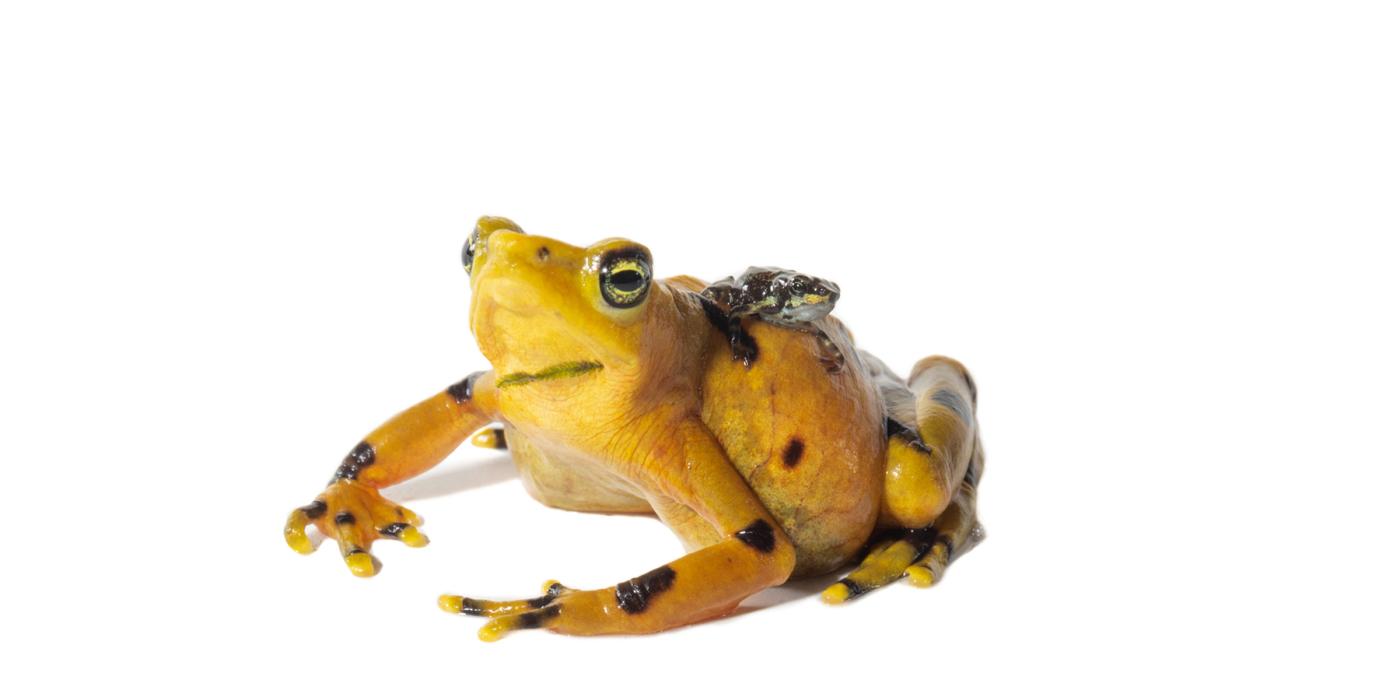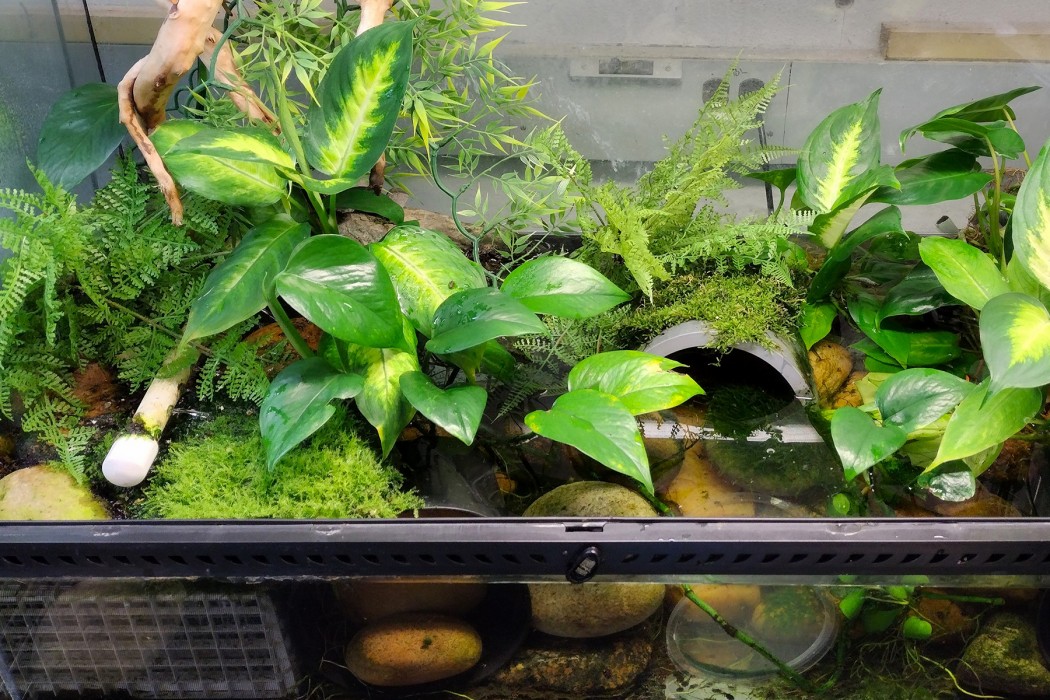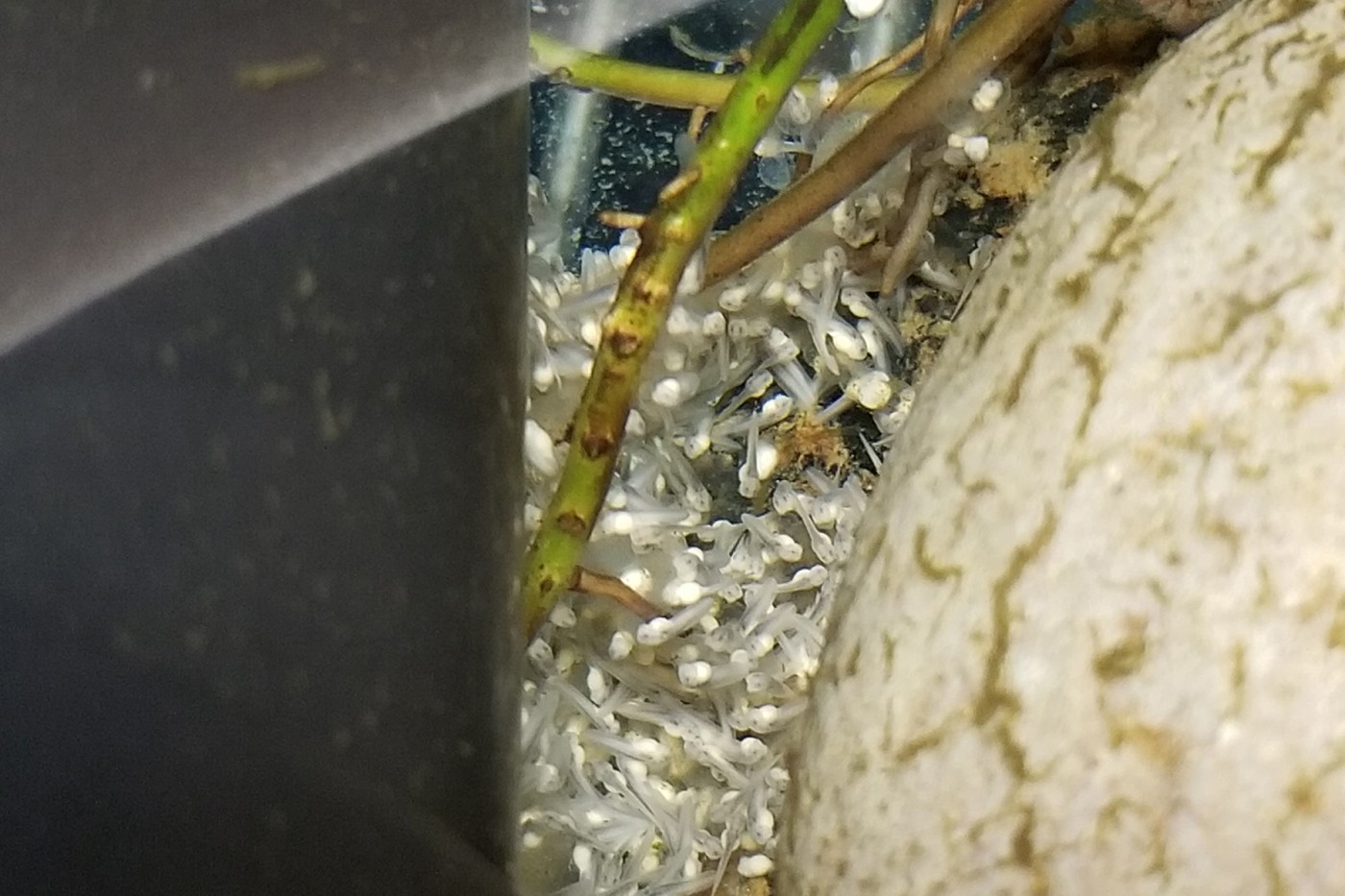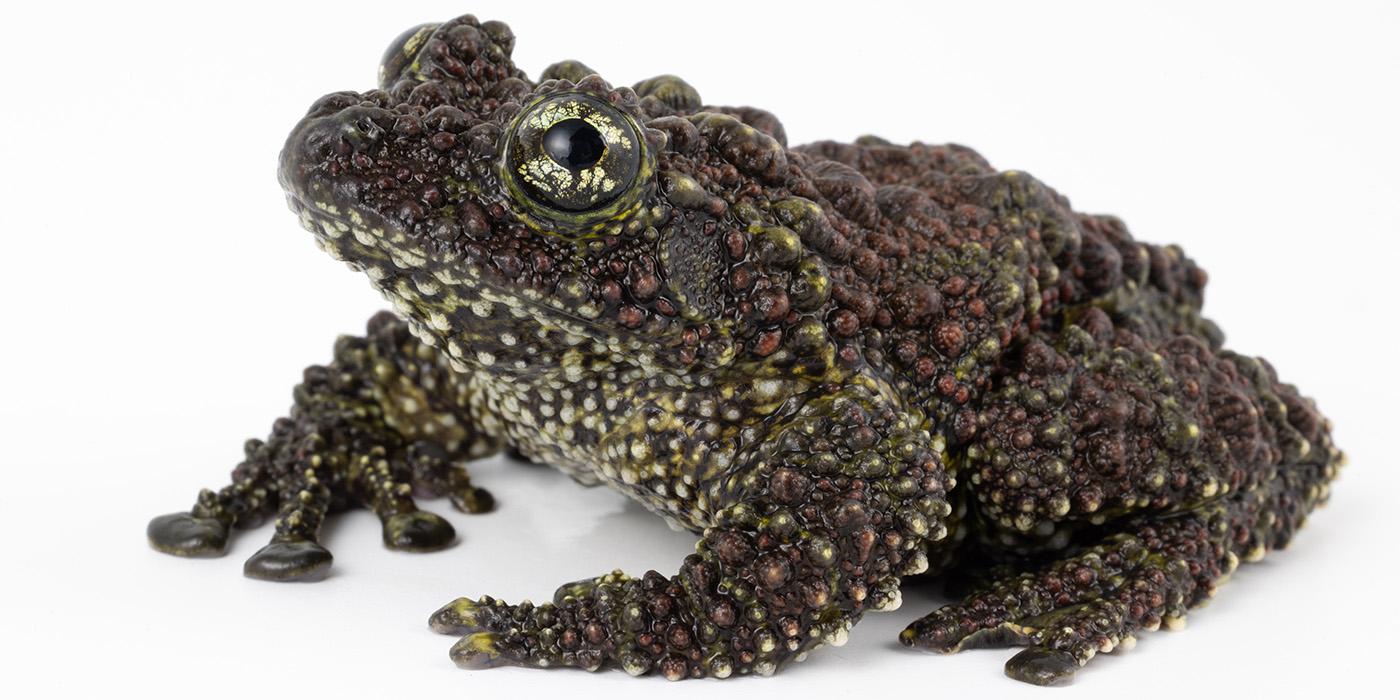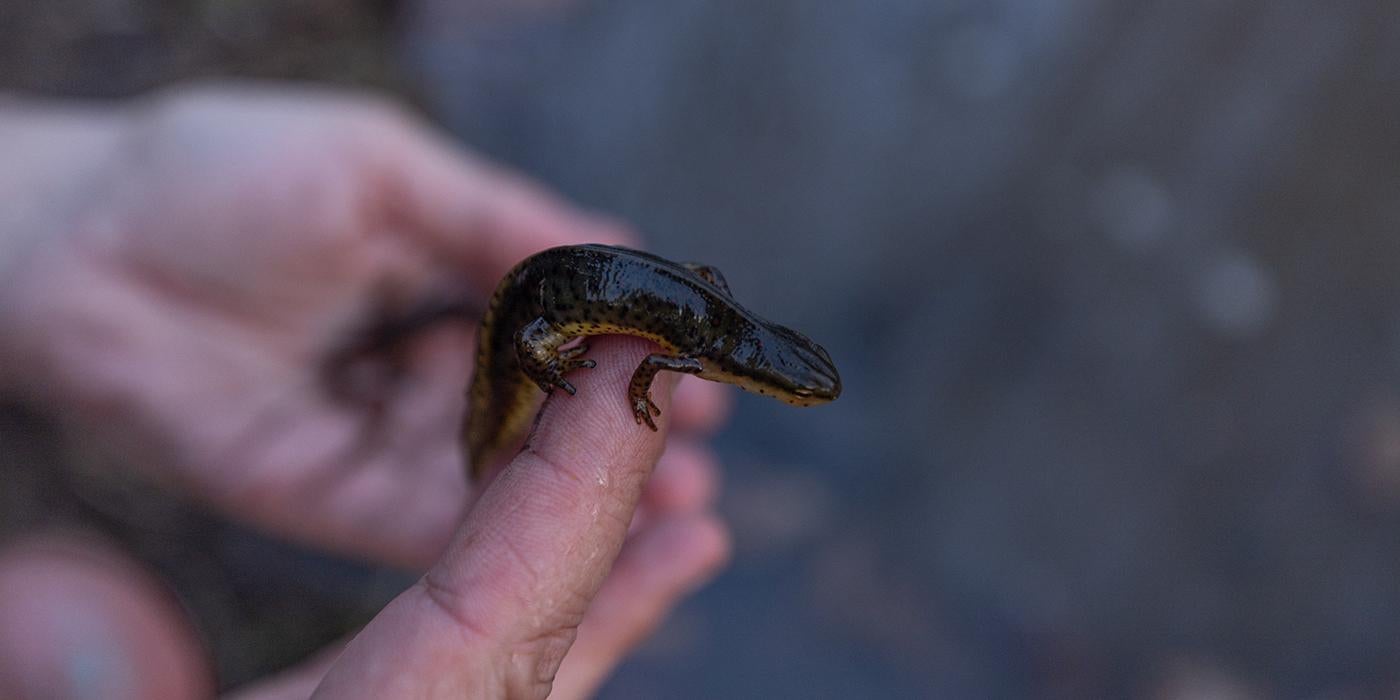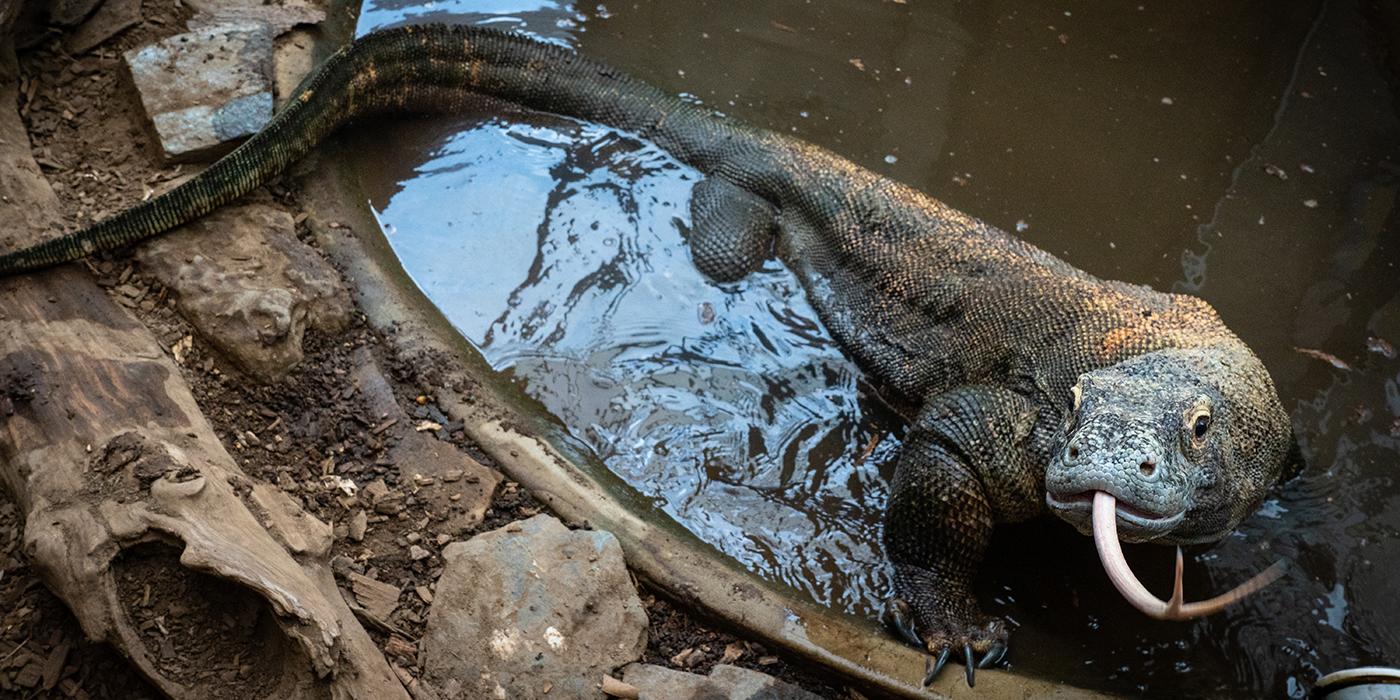From Tadpoles to Toadlets: Meet Our Panamanian Golden Frog Hatchlings
An unseasonably strong storm in fall 2022 stirred up some romance between two Panamanian golden frogs. Now, Reptile Discovery Center keepers are caring for more than 400 of the couple’s golden-hued hatchlings! The team’s breeding efforts are a boon for this species, which has been extinct in the wild since 2009. Hear how they got things ‘hopping’ from assistant curator Matt Evans.
What are your favorite facts about Panamanian golden frogs?
I love that they are actually toads, not frogs! In the 1980s and 90s, there was a beautiful toad called the golden toad in Montverde, Costa Rica. When that toad started to disappear suddenly from its habitat due to an emerging disease, it became widely recognized around the globe. They couldn’t call the Panamanian golden frog the golden toad—it would be confusing! So, they called it ‘frog,’ and the name just stuck.
We associate a lot of characteristics with toads, such as warty and bumpy skin. That’s not always the case. Panamanian golden frogs have very smooth skin, similar to dart frogs. They also have an upturned snout that gives them a rather distinguished look about them.
What drives you to save this species?
Early in my career, I got to see Panamanian golden frogs in the wild—before they disappeared. When a species that is as important to the culture and community of a nation and that is critical to its native ecosystem just disappears—you can’t help but want to protect that species.
We are very fortunate to have them here as amazing animal ambassadors. The last time we bred this species was nearly 20 years ago—in 2004 and 2005. This time around, it’s just as exciting!
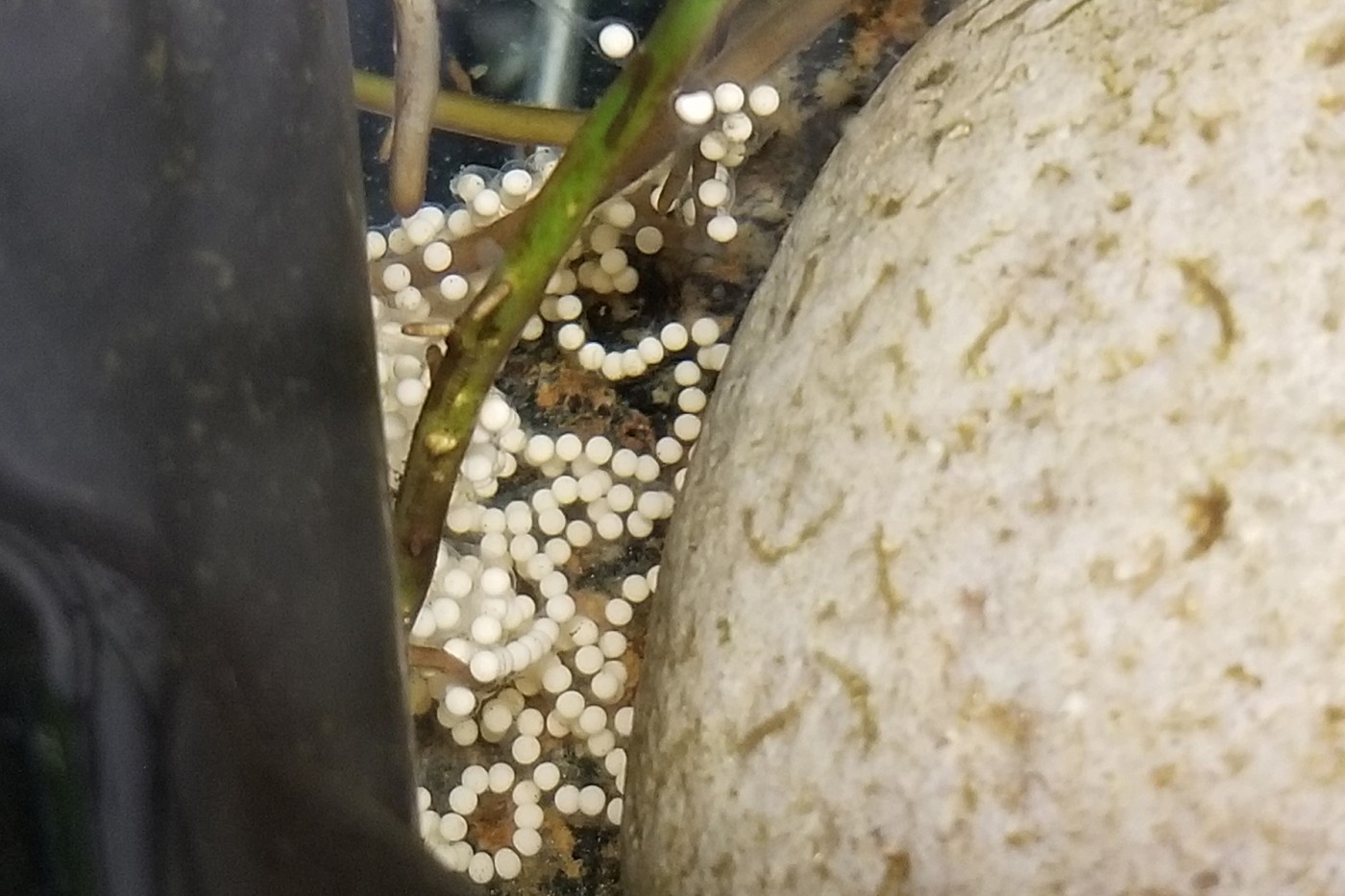
How did you ‘set the mood’ for breeding?
In 2021, we received three female Panamanian golden frogs from Zoo Atlanta in Georgia and six males from Como Park Zoo and Conservatory in Minnesota. The Species Survival Plan scientists gave us a breeding recommendation for each male and female. Initially, the females weren’t receptive to the males and did not produce eggs. We tried multiple pairings with different individuals without success.
On Oct. 13, 2022, there was a big storm coming. Changes in atmospheric pressure is a trigger for a lot of amphibians to breed. They can feel these changes, even in the basement of the Reptile Discovery Center. So, I turned on the misting system and put a male and female together that, up until that time, we hadn’t paired yet. And it worked! It just so happened that the timing and breeding conditions were perfect. The female laid eggs Oct. 18.
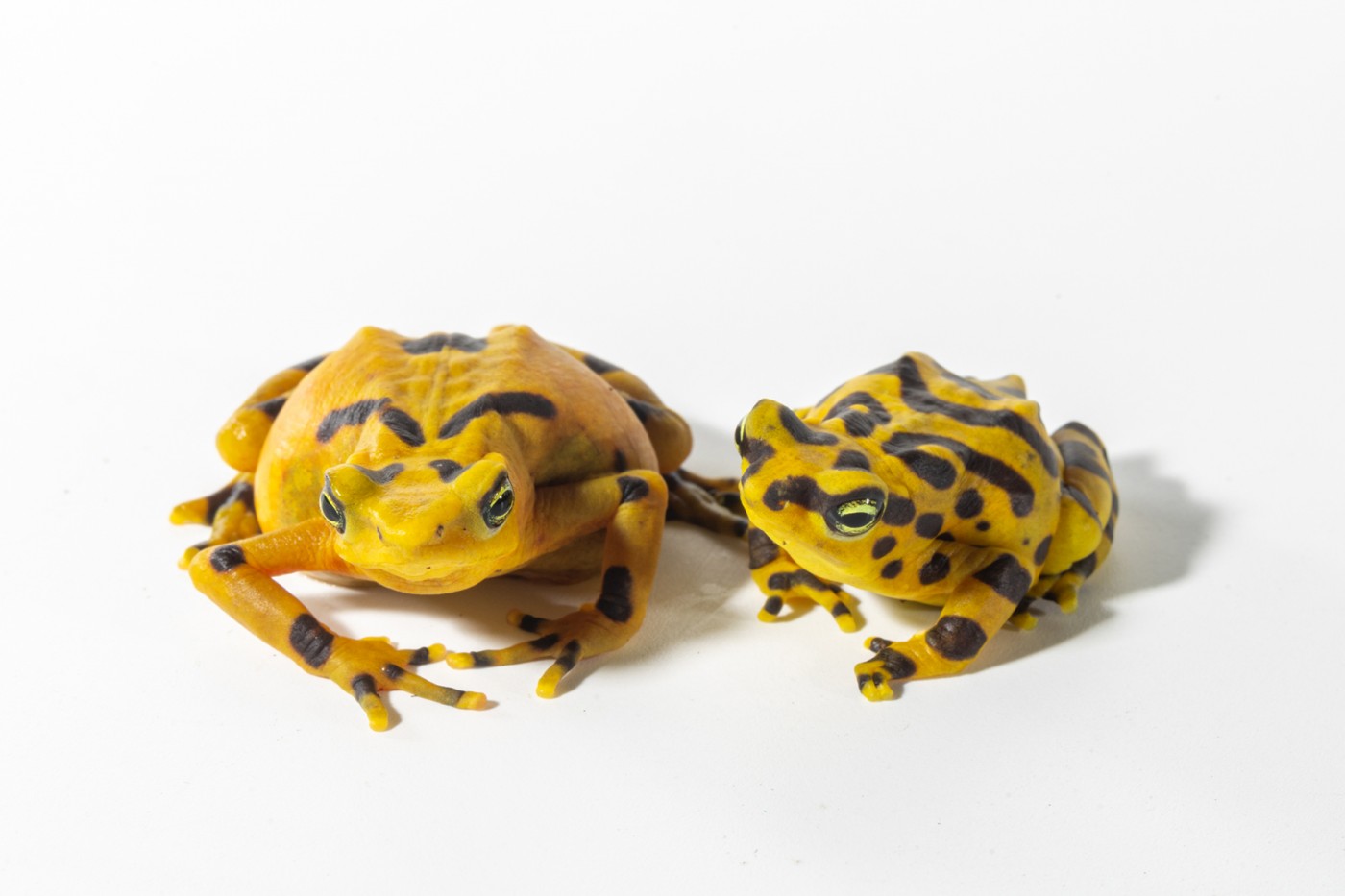
Pictured are the proud parents of more than 400 hatchlings! The amorous amphibians bred in October 2022. The female is on the left and the male is on the right.
How do you tell the males and females apart?
By their size. Males are about half the size of females, and also half the weight—3 to 4 grams versus 8 to 9 grams.
Why are the females so much larger than the males?
So she can carry the male around! Panamanian golden frogs breed via amplexus—the male climbs onto the female’s back and embraces her for days, sometimes weeks, at a time.
The male’s got a modified thumb with a “nuptial pad” on the inside, which gives him a good grip. He needs to hang on tight to the female, because if they went under the water and he didn’t have a good grip, he could be swept downstream.
Because the female is larger, she has the ability to decide when, where and how they move. She can even climb onto dry land while he’s clinging to her!
Where and how do they breed?
In the wild, female Panamanian golden frogs live in the forest, and males live around these beautiful fast-flowing streams and waterfalls. The rainy season triggers females to come down to the stream, where they come into contact with the males.
We mimic this at the Zoo by keeping them in separate enclosures until the conditions are just right for breeding. At that time, we’ll pair a male and female together in a larger enclosure, complete with a stream and misters to simulate rain.
In the wild, the sound of the rushing water is incredibly loud. If someone was standing right next to you, you would have to yell for them to be able to hear you! Unlike most frogs and toads, Panamanian golden frogs don’t have a loud call. Their vocalization is more of a low whistle. But they’ve got this bold, bright pattern that makes them somewhat easy to spot. So, both males and females will wave their hand to try to attract each other’s attention—and hopefully get a receptive wave back.
When choosing where to lay their eggs, females pick a spot not in the fast-moving flow, but in a calm eddy or pool. Preferably, it will be at least four-to-eight inches deep. Then, she’ll find a dark crevice—either behind or underneath a rock—and lay hundreds of eggs in one long string. As she lays each egg, the male fertilizes it. He’s got to be lined up perfectly to maximize his chances of reproducing.
After they’ve bred, the male lets go of the female, and they go their separate ways. Here, we just put our male and female back in their “home” enclosures. After about a week, we saw the color of the eggs change from light to dark. Those were the tadpoles forming inside!
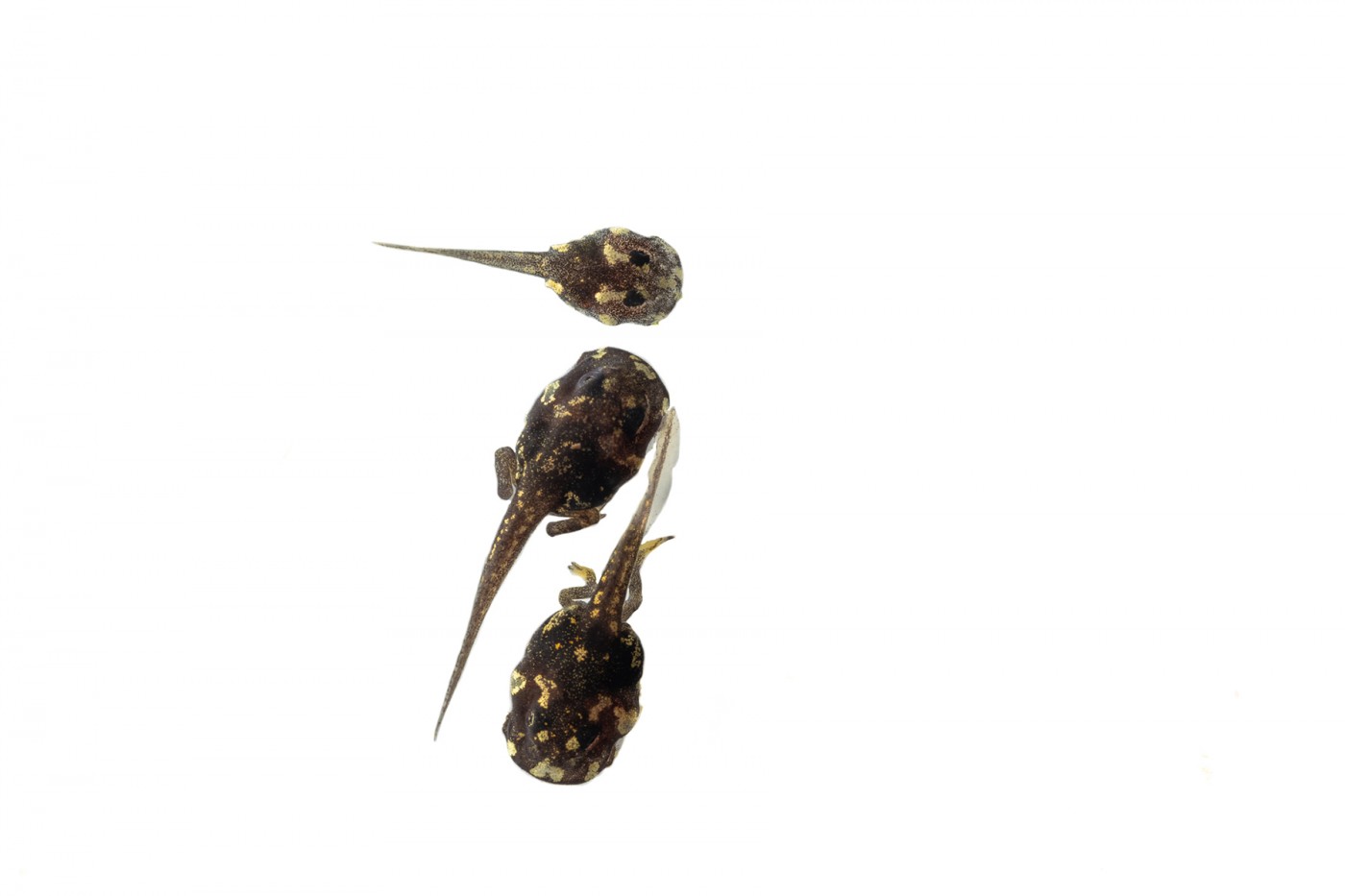
How long did it take for the tadpoles to become toadlets?
A long time—about five months! That’s pretty typical for Atelopus species, but it’s far longer than the frogs and toads that are native to Washington, D.C., which usually metamorphize from tadpole to froglet in the span of a month or two.
The female laid eggs Oct. 18. Nine days later on Oct. 27, some started to hatch. Another seven days passed before those began swimming Nov. 3. Nearly 5 months later, on Mar. 24, keepers observed the first front legs forming. Two weeks later, on April 7, the first metamorphs emerged from the water as toadlets!

What do you feed them?
As tadpoles, Panamanian golden frogs typically eat diatoms and algae. Once they metamorphize into toadlets, they start eating live insects. However, they are tiny—so tiny, they could sit on top of a pencil eraser! And because they are tiny, their food has to be even tinier.
Frogs and toads’ hunting instincts are based on movement. They always eat live prey. Trying to find food for toadlets that weigh less than a gram can be tricky. For the first few weeks, we feed them springtails. Once they’ve grown a bit bigger, we offer them small fruit flies and pinhead crickets—in addition to the springtails—to give them some choice and variety. Occasionally, we’ll dust their food with calcium and vitamins to ensure they’re getting the nutrition they need.
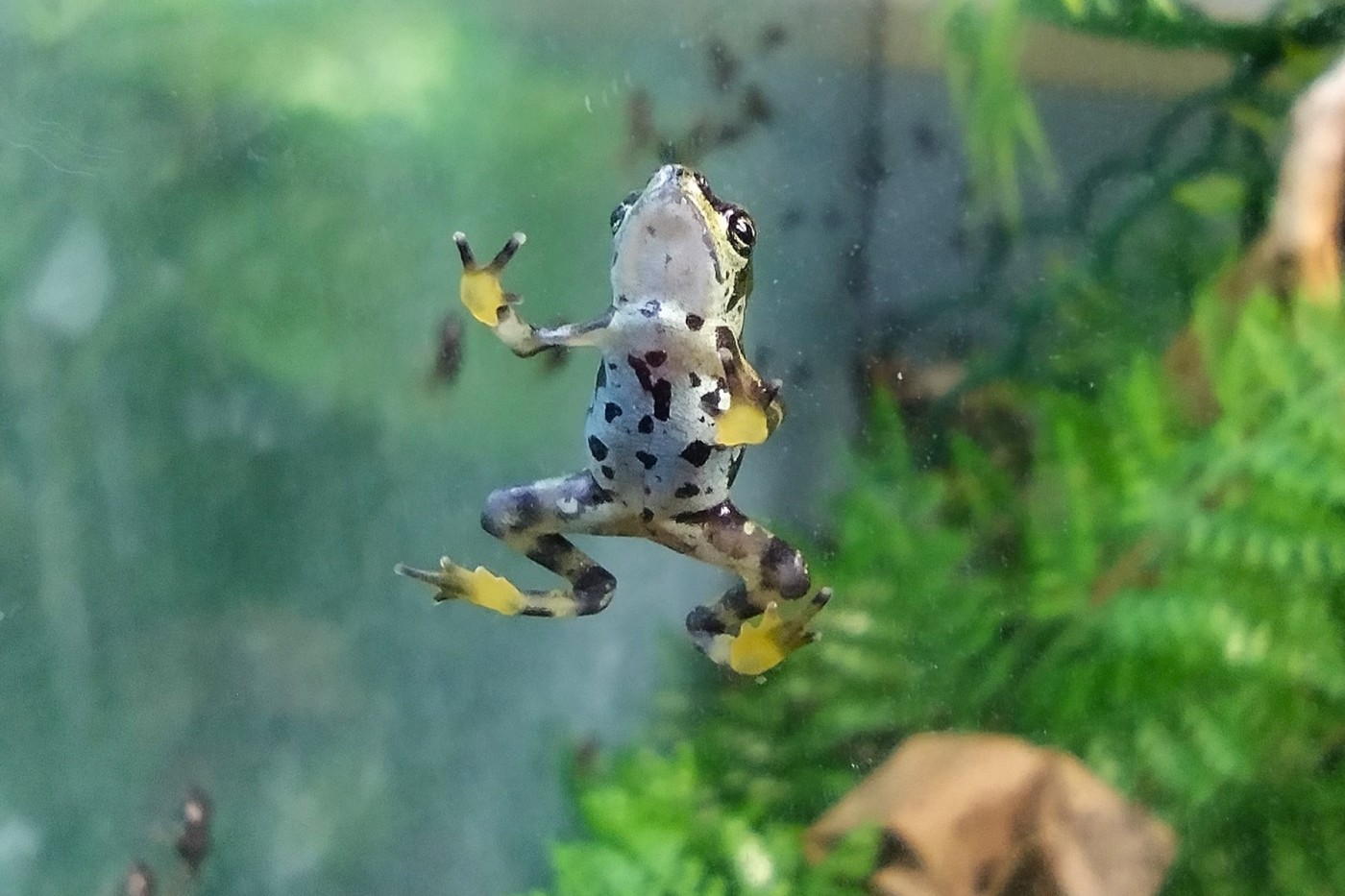
Has anything surprised you throughout this process?
It’s been a few years since we last bred this species, and I forgot how long they take to metamorphize from tadpole to toadlet. These toads grow quickly, though. Males will be fully grown in about a year. Females, because they are bigger, take a little longer to reach adult size, around 1.5 to 2 years.
Also, it’s amazing just how colorful they are when they are little. When they first morph out, they’re dark, mostly black. They first start to get color on their legs and feet, beautiful and vibrant shades of green, red and orange that is perfect camouflage among the rocks, moss and leaf litter. Around 6 months, they start to turn their signature yellow and the black “X” pattern (or a variation of it) develops on their back.
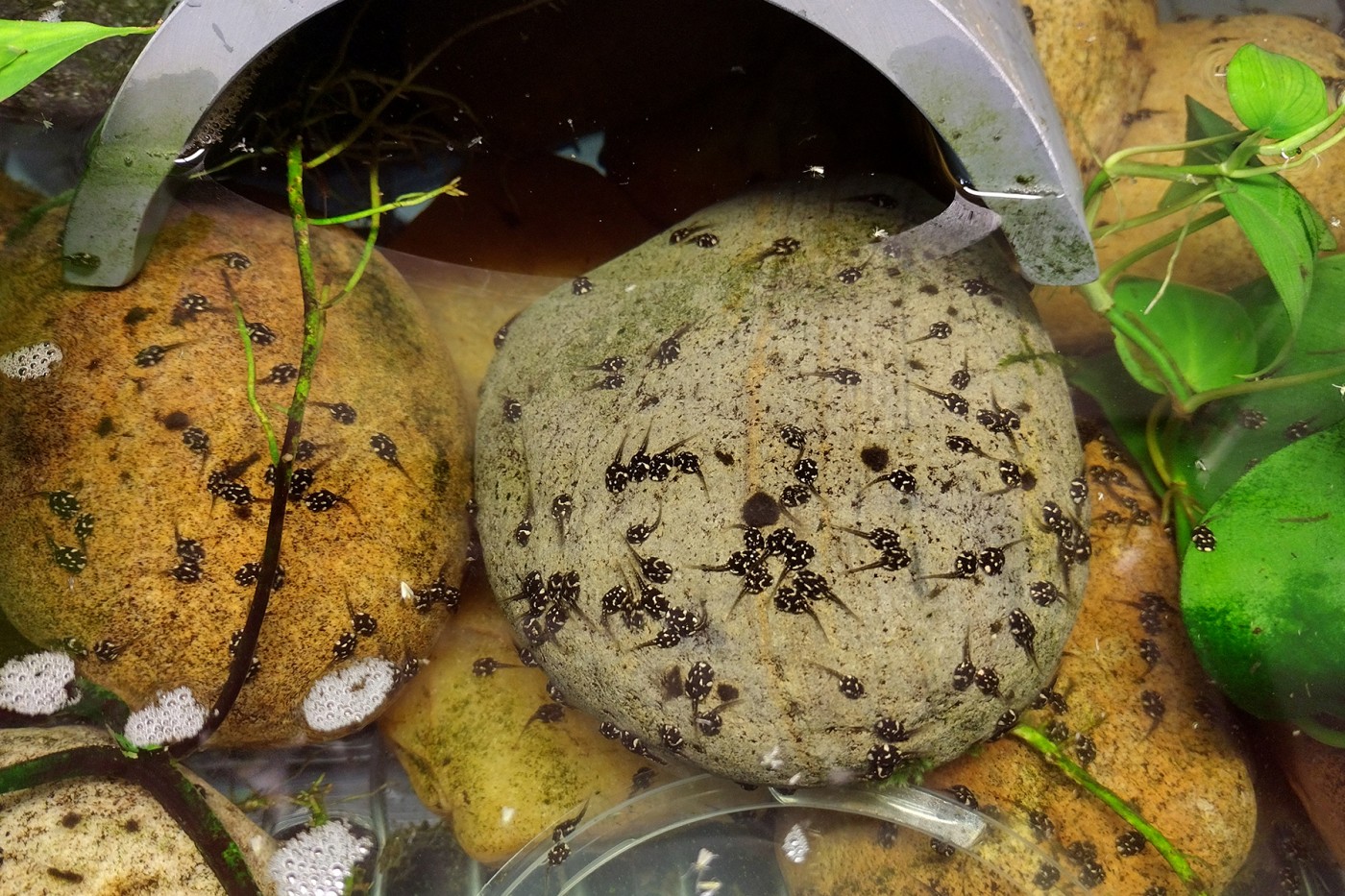
What’s next for the toadlets?
Because we were fortunate to have so many babies, their futures are looking bright. Some will serve as animal ambassadors, either here or at other zoos around the country. Others will become part of the Species Survival Plan breeding program. More still may take part in research projects, including projects taking place here at the Zoo.
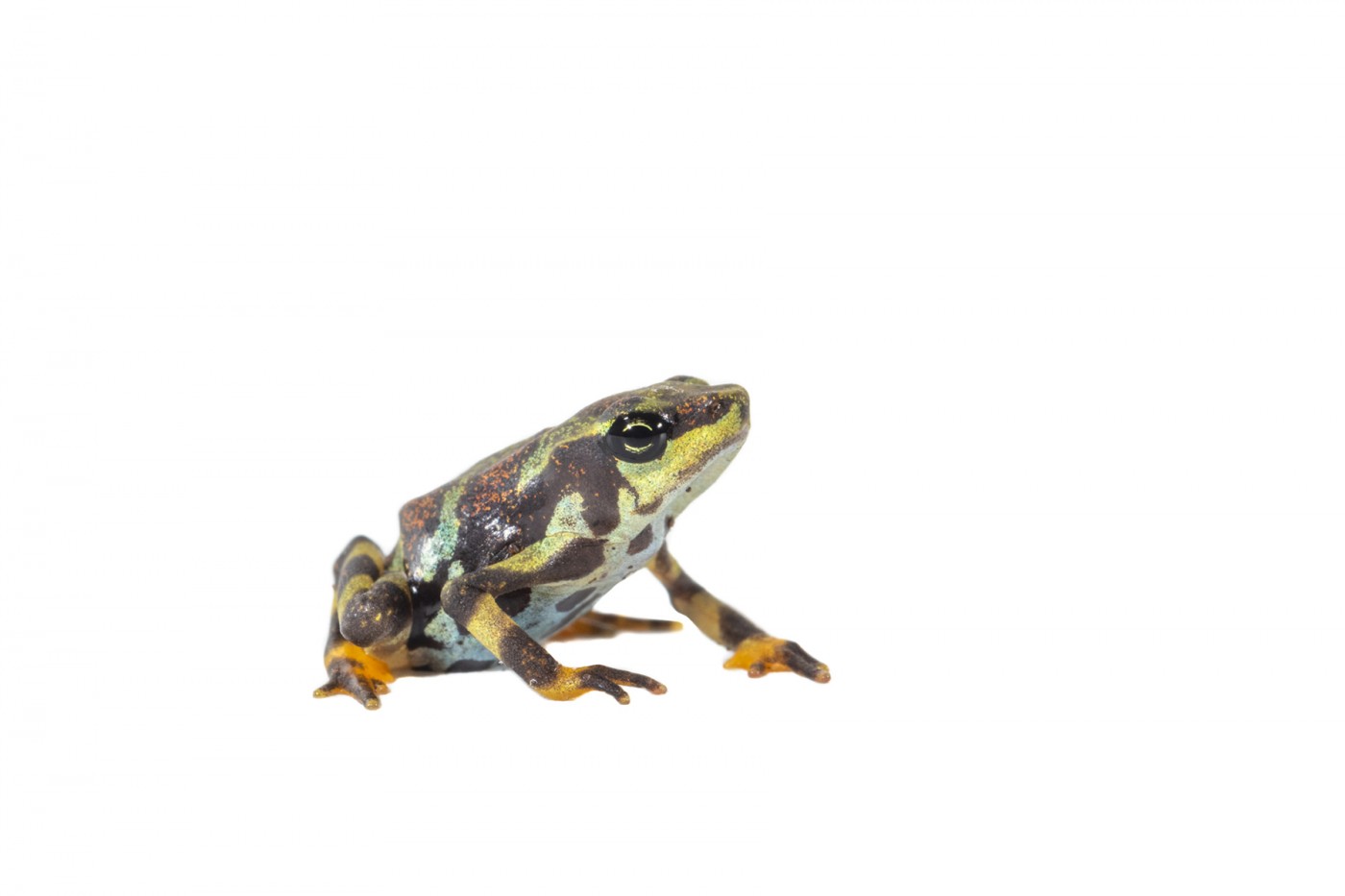
Got any tips for spotting the Panamanian golden frogs on exhibit?
These animals are active during the day. Visitors are likely to see them hopping around or resting on logs and bromeliads or underneath fronds. Even though they’re bright yellow and black, that pattern really helps them blend into the shadows when they want to!
We feed them in the late morning on Mondays, Wednesdays and Fridays, and they’re quite active when they hunt. Or, you can make the Reptile Discovery Center your last stop at the Zoo. As soon as the sun starts to set, they climb up the plants and fall asleep on top of the leaves.
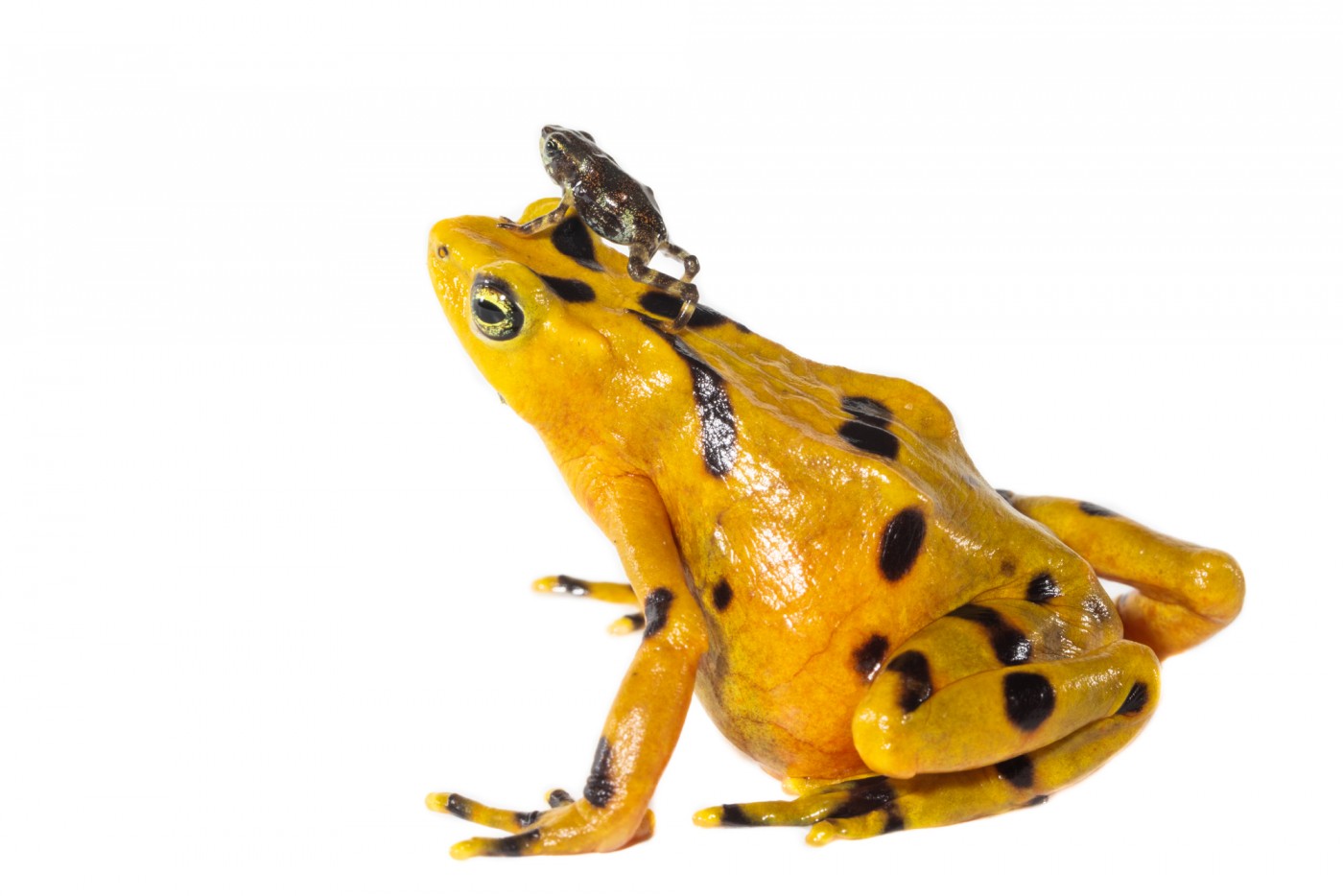
I want to help these toads! What can I do?
Panamanian golden frogs haven’t been seen in the wild since 2009. We are their best hope for survival. Breeding frogs is just one piece of the puzzle. Zoos and other conservation organizations must continue working together to put animals hatched under human care back out into the wild, reestablishing populations where there used to be strongholds.
One of the reasons Panamanian golden frogs disappeared is because of emerging diseases, like the amphibian chytrid fungus. The Panamanian government, our partners in the Association of Zoos and Aquariums (AZA), and the Panama Amphibian Rescue and Conservation Project (PARC) are working together to find cures for these diseases, figure out what these toads need to survive, and plan successful reintroductions in their native habitat so they can have a successful future.
There are many ways to help Panamanian golden frogs! One simple thing you can do today is share this story with your friends and family. Helping others appreciate these animals and understand their value to our world will go a long way in protecting them. If you have the means, you could also donate to conservation organizations like ours and PARC that are actively working to breed and better understand this species. Lastly, you could volunteer at your local zoo. After all, it takes a village to save a species!
This story appears in the August 2023 issue of National Zoo News.Related Species:


